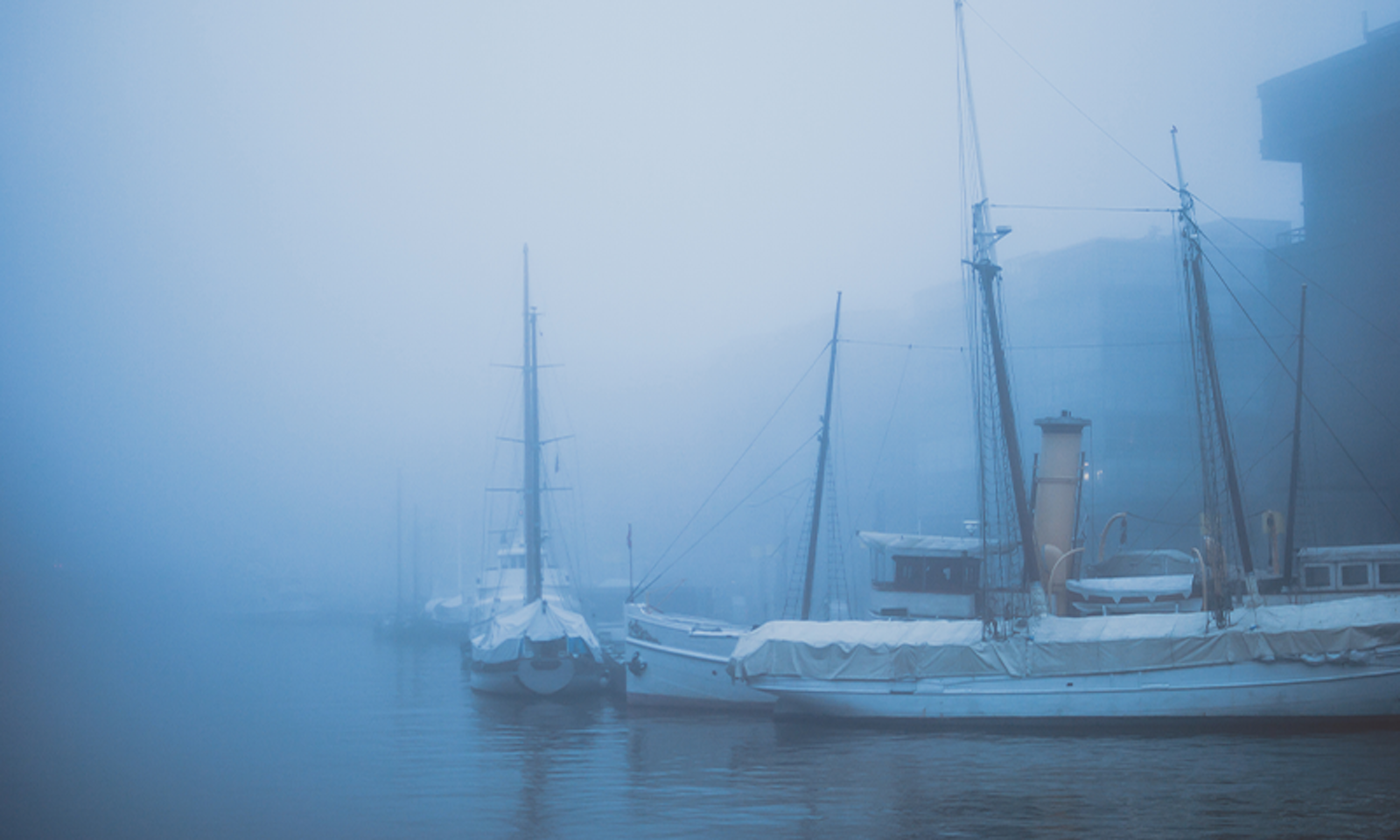It sounds like an animal, don’t it,” says a character in a Ray Bradbury story about the foghorn in a lighthouse he and his mate are overseeing. “A big lonely animal crying in the night. Sitting here on the edge of 10 million years calling out to the deep. I’m here, I’m here, I’m here.”
Starting in the early 1800s, ship captains began to rely on the baritone wails of foghorns to navigate along coastal areas often blanketed in fog. These horns were generally manually operated by humans in lighthouses and powered by air. When light failed to penetrate the gloom, sound could still get through. The lower the pitch, the longer the wavelength, and the longer the wavelength, the farther a sound wave could travel and the more easily it could pass around barriers, such as rocks. Different tones and sequences were used to signal different things, and mariners had to be able to recognize them.
The foghorn itself is now nearly extinct.
The booming calls of the foghorns quickly took up residence in the collective imagination. Watch almost any old black-and-white movie set in San Francisco and you will hear the signature two-tone monster bleat of a foghorn in the background, layered in for atmosphere. References abound in cinema and literature. The sound has become indelibly linked to the mysterious romance of water vapor on the move, the loneliness of life at sea, the solitary figure of the lighthouse keeper. But the foghorn itself is now nearly extinct, outmoded by new navigational and safety technology such as radar and GPS.
Dianne Ballon, a sound artist from Maine, realized this only recently when she was trying to record the sounds of some local foghorns. She went out on a foggy day with all of her equipment, turned her recorder on, and never heard a single foghorn call. She went home and did a little research and learned that the foghorn is a “lost sound,” says Ballon. “I couldn’t believe it.” She contacted a lighthouse historian and he confirmed that the Coast Guard has converted the vast majority of foghorns so that they no longer sound automatically in fog, only on an as-needed basis when activated by mariners with radios. But he told her that the museum at Portland Head Light, a lighthouse in Cape Elizabeth, Maine, had a radio and could turn the foghorn on for visitors. So she went in one day at dawn and made a recording.
Sound artist Dianne Ballon recorded the sound of the current foghorn at Portland Head Light, a lighthouse in Cape Elizabeth, Maine, at dawn on a sunny day. Listen above.
In the 1970s, the Coast Guard began replacing manually controlled air-powered fog horns with automated ones that used strobe lights and lenses to detect low visibility, and electronic circuits to generate the low frequency vibrations. But these new horns made sounds that were more monochrome, less throaty and resonant than traditional horns, and some listeners were opposed. When one automated horn was installed on San Francisco Bay in the early 2000s, for instance, local foghorn lovers objected so strenuously that the old horn was reinstalled. Today it is operated by volunteers and is one of the last of its kind. Elsewhere though, the change took.
In more recent decades, navigational technologies available to ships have advanced significantly, and the International Association of Lighthouse Authorities has declared that fog signals are “no longer necessary for the needs of navigation.” The automated electronic foghorns often broke, anyway, sounding the alarm even on cloudless sunny days, and were costly to fix, according to Jeff Gales, executive director of the United States Lighthouse Society. And though foghorns have a vocal fan base, many residential communities found the noise more of a nuisance than a pleasure. Maritime authorities around the world have been decommissioning them—but not without significant nostalgia in some cases. In 2011, for instance, The National Trust of Britain commissioned an elaborate musical composition it called Foghorn Requiem, involving a flotilla of 60 vessels on the North Sea, to mark the passing of the Souter Lighthouse foghorn from the British coastal landscape.
In the U.S., foghorns remain in some places primarily in the northeast, due to pressure from fishing fleets and smaller boat pilots, or to warn of isolated dangers such as an oil drilling platform. But these have mostly been converted to the as-needed radio system. Gone are the days when one could expect to hear the mournful calls of the foghorn whenever the dense quiet of fog fell on the world.
Dianne Ballon’s recording at Portland Headlight is recorded up close, on a fogless day, so the chatter of bird song colors the foreground, offsetting the fog signal’s wail. It’s not the sound you would typically associate with a foghorn. “We usually don’t hear it up close with all the birds. It’s more like a train whistle in that distant kind of way,” she says. It’s a new sound for a new era. ![]()
Lead image: Yurii Zymovin / Shutterstock




























